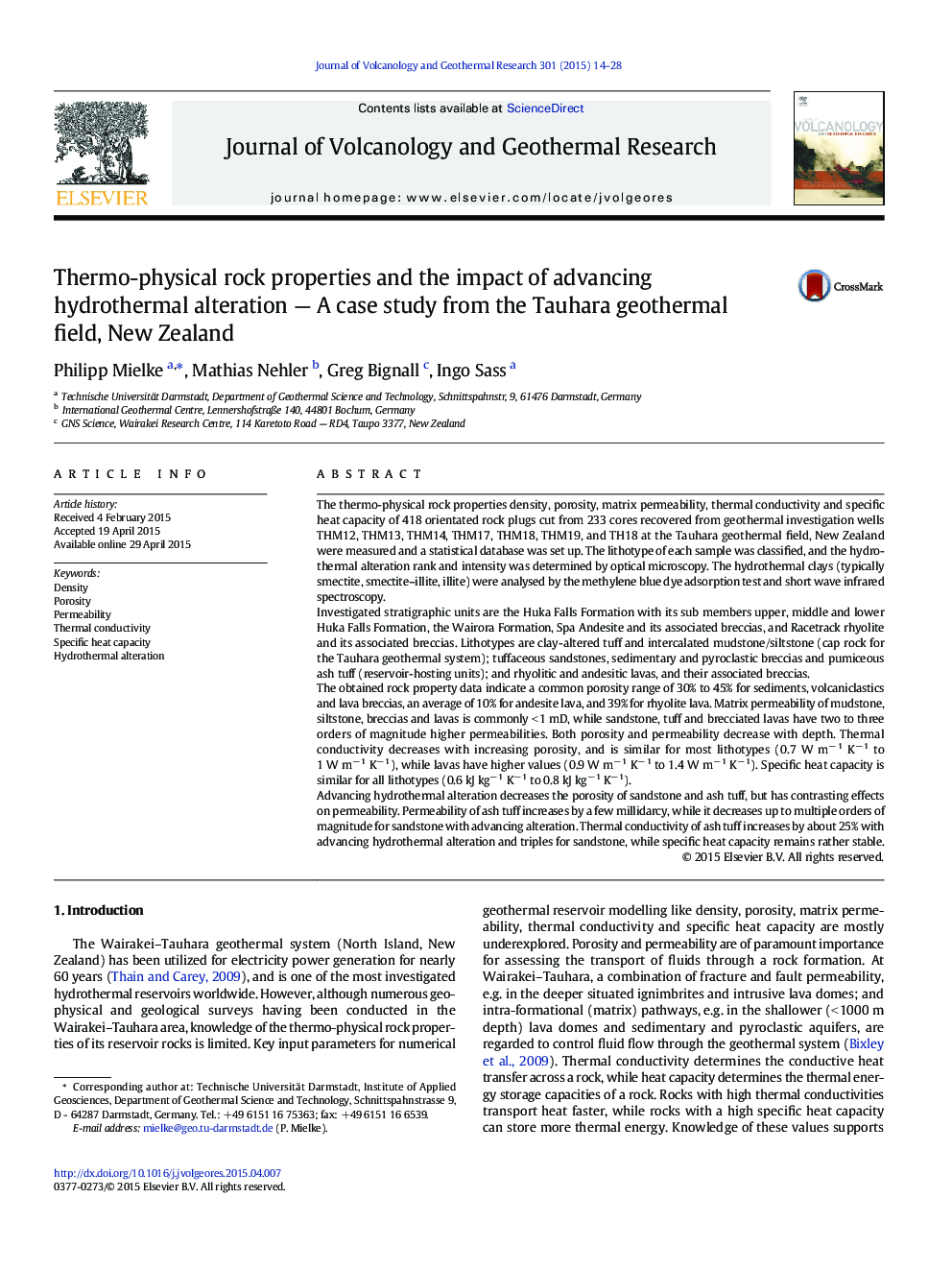| کد مقاله | کد نشریه | سال انتشار | مقاله انگلیسی | نسخه تمام متن |
|---|---|---|---|---|
| 4713110 | 1638321 | 2015 | 15 صفحه PDF | دانلود رایگان |

• The thermo-physical rock properties of volcanic and sedimentary rocks are reported.
• The rock properties are correlated with hydrothermal alteration intensity.
• Porosity and permeability decrease with depth.
• Porosity controls thermal conductivity.
The thermo-physical rock properties density, porosity, matrix permeability, thermal conductivity and specific heat capacity of 418 orientated rock plugs cut from 233 cores recovered from geothermal investigation wells THM12, THM13, THM14, THM17, THM18, THM19, and TH18 at the Tauhara geothermal field, New Zealand were measured and a statistical database was set up. The lithotype of each sample was classified, and the hydrothermal alteration rank and intensity was determined by optical microscopy. The hydrothermal clays (typically smectite, smectite–illite, illite) were analysed by the methylene blue dye adsorption test and short wave infrared spectroscopy.Investigated stratigraphic units are the Huka Falls Formation with its sub members upper, middle and lower Huka Falls Formation, the Wairora Formation, Spa Andesite and its associated breccias, and Racetrack rhyolite and its associated breccias. Lithotypes are clay-altered tuff and intercalated mudstone/siltstone (cap rock for the Tauhara geothermal system); tuffaceous sandstones, sedimentary and pyroclastic breccias and pumiceous ash tuff (reservoir-hosting units); and rhyolitic and andesitic lavas, and their associated breccias.The obtained rock property data indicate a common porosity range of 30% to 45% for sediments, volcaniclastics and lava breccias, an average of 10% for andesite lava, and 39% for rhyolite lava. Matrix permeability of mudstone, siltstone, breccias and lavas is commonly < 1 mD, while sandstone, tuff and brecciated lavas have two to three orders of magnitude higher permeabilities. Both porosity and permeability decrease with depth. Thermal conductivity decreases with increasing porosity, and is similar for most lithotypes (0.7 W m− 1 K− 1 to 1 W m− 1 K− 1), while lavas have higher values (0.9 W m− 1 K− 1 to 1.4 W m− 1 K− 1). Specific heat capacity is similar for all lithotypes (0.6 kJ kg− 1 K− 1 to 0.8 kJ kg− 1 K− 1).Advancing hydrothermal alteration decreases the porosity of sandstone and ash tuff, but has contrasting effects on permeability. Permeability of ash tuff increases by a few millidarcy, while it decreases up to multiple orders of magnitude for sandstone with advancing alteration. Thermal conductivity of ash tuff increases by about 25% with advancing hydrothermal alteration and triples for sandstone, while specific heat capacity remains rather stable.
Journal: Journal of Volcanology and Geothermal Research - Volume 301, 15 August 2015, Pages 14–28